| Home |
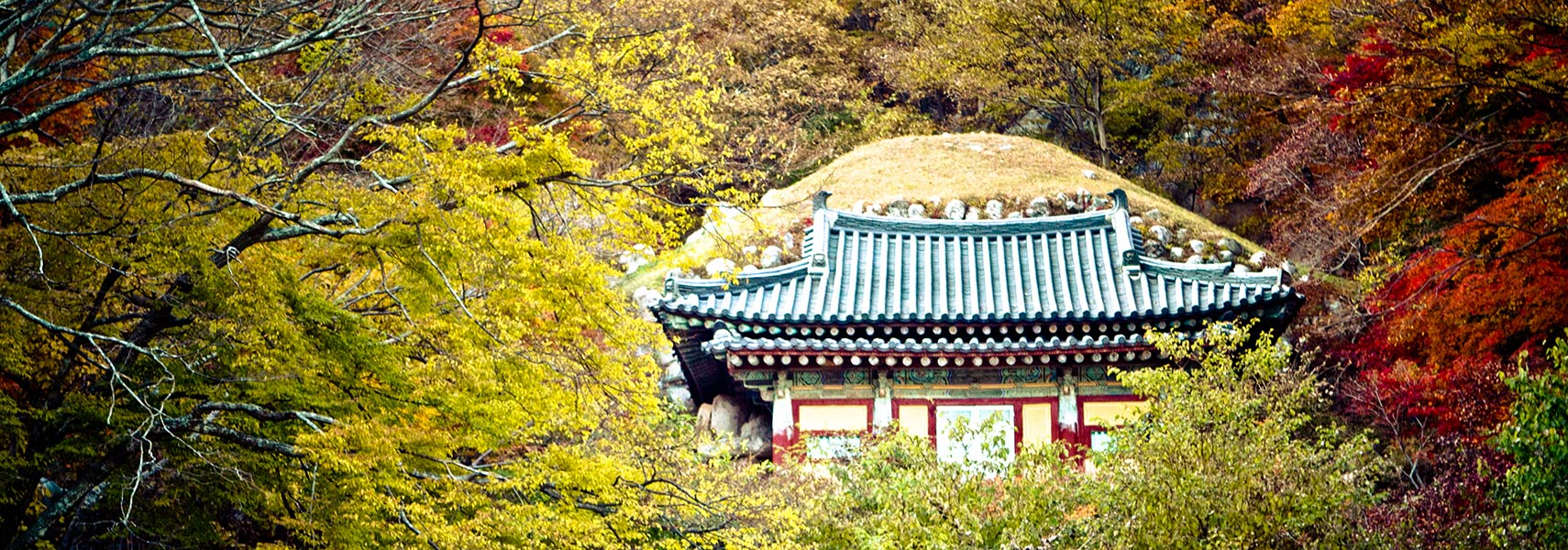 Seokguram Grotto in Gyeongju was established in the 8th century on the slopes of Mount Toham. The artificial cave contains a 3.5 m tall statue of the Buddha in the bhumisparsha mudra position, looking at the the East Sea (Sea of Japan). Seokguram Grotto and Bulguksa Temple Image: suhseal |
___ Korea (South Korea) - HangukDestination South Korea, officially the Republic of Korea (ROK), a country in eastern Asia that occupies the southern part of the Korean peninsula, which is located between the Sea of Japan (East Sea) in east, the Yellow Sea in west, and the Korea Strait, a sea passage between South Korea and Japan in the south. South Korea has a land border with North Korea in north. The country also shares maritime borders with China and Japan.With an area of 99,678 km² the country is about the size of Iceland, or slightly smaller than the U.S. state of Pennsylvania. South Korea has a population of 50.8 million inhabitants (in 2016), largest city and capital is Seoul, Busan is South Korea's second city and a major port. Official language is Korean. |
Republic of Korea | Taehan-min'guk (Daehan-minguk) - 대한민국 |
Country Profile |
Background: The Korean Peninsula extends southward from the northeastern part of the Asian continent. The country has a long history and proud tradition. Buddhism and Confucianism have influenced the nation's society and culture. Koreans, like many other Asian peoples, are descendants of the Mongolian Tungus stock. They differ from the neighboring Japanese and Chinese, however, in that Koreans are a homogeneous ethnic group with their own language, culture, and customs. Over the last several decades, South Korea has transformed herself from an agrarian society to an industrial leader on the world economic scene. Progress is being made in education, science and technology and social welfare. In 2002 South Korea has co-hosted, the FIFA World Cup™ tournament. After World War II, a republic was set up in the southern half of the Korean Peninsula (in August 15, 1945) while a communist-style government was installed in the north. The Korean War (1950-53) had US and other UN forces intervene to defend South Korea from North Korean attacks supported by the Chinese. An armistice was signed in 1953 splitting the peninsula along a demilitarized zone at about the 38th parallel. Thereafter, South Korea achieved rapid economic growth, with per capita income rising to 13 times the level of North Korea. In 1997, the nation suffered a severe financial crisis from which it continues to make a solid recovery. South Korea has also maintained its commitment to democratize its political processes. In June 2000, a historic first south-north summit took place between the south's then President KIM Dae-jung and the north's leader KIM Chong-il. In December 2000, President KIM Dae-jung won the Noble Peace Prize for his lifelong commitment to democracy and human rights in Asia. He was the first Korean to win a Nobel Prize. More information on South Korea's political system, foreign policy, economy, science and technology, and more. |
Official Name: 대한민국 - Taehan-min'guk int'l long form: Republic of Korea int'l short form: South Korea abbreviation: ROK note: the South Koreans generally use the term "Han'guk" to refer to their country. ISO Country Code: kr, kor Actual Time: Thu-Apr-25 21:42 Local Time = UTC +9h Country Calling Code: +82 Capital City: Seoul The Municipality of Seoul (pop. 11 million). Other Cities: Daejeon (Taejon, pop. 1.3 million), Incheon (Inchon, pop. 2.4 million) Gwangju (Kwangju, pop. 1.4 million) Busan (Pusan, pop. 3.9 million) Daegu (Taegu, pop. 2.5 million) Government: Type: Republic with powers shared between the president and the legislature. Liberation: 15 August 1945 from Japanese rule. Geography: Location: South Korea occupies the southern part of the Korean peninsula, the peninsula is surrounded by Yellow Sea, East China Sea, and East Sea (Sea of Japan). Area: 99,678 km² (38 375 sq. mi.) (entire Korean Peninsula including North Korea: 222 154 sq km) (85 774 sq. mi.) Terrain: Partially forested mountain ranges separated by deep, narrow valleys; cultivated plains along the coasts, particularly in the west and south. Highest mountains in S. Korea - Hallasan on Jeju Island, 1950 m. Climate: Temperate, four distinct seasons, and heavier rainfall in the summer. People: Nationality: Korean(s). Population: 50.8 million (2016) Population growth rate: 0.6%. Ethnic groups: Korean; small Chinese minority. Religions: Buddhism 46%, Protestantism 39%, Catholicism 13%, Confucianism 1%, Cheondogyo (the Religion of Heavenly Way) and others 1% Language: Korean, spoken by 70 million people and 5 million overseas Koreans. Writing system: Hangeul, the Korean alphabet, was invented by King Sejong the Great in 1443, consisting of 10 vowels and 14 consonants. Literacy rate: 97.75% (2000 estimate), male: 99.1%, female: 96.4% Natural resources: Limited coal, tungsten, iron ore, limestone, kaolinite, and graphite. Agriculture products: Rice, root crops, barley, vegetables, fruit; cattle, pigs, chickens, milk, eggs; fish. Industries: Electronics, telecommunications, automobile production, chemicals, shipbuilding, steel. Exports - commodities: semiconductors, petrochemicals, automobile/auto parts, ships, wireless communication equipment, flat display displays, steel, electronics, plastics, computers Exports - partners: China 26%, USA 13.3%, Hong Kong 5.8%, Vietnam 5.3%, Japan 4.9% (2015) Imports - commodities: crude oil/petroleum products, semiconductors, natural gas, coal, steel, computers, wireless communication equipment, automobiles, fine chemical, textiles Imports - partners: China 20.7%, Japan 10.5%, US 10.1%, Germany 4.8%, Saudi Arabia 4.5% (2015) Currency: Korean Won (KRW) (Source: Korean National Statistical Office and others). South Korea key statistical data. |
-Reception-Center.jpg) Reception Center at Cheongwadae the "Blue House", the South Korean presidential residence in Seoul, South Korea. Image: Steve46814 Political system South Korea is a presidential representative democratic republic, specified by the constitution. Legislative power is vested in both the government and the National Assembly. Head of state is the President, the president is also the chairman of the cabinet, the chief executive of the government, and commander-in-chief of the armed forces. If the National Assembly votes against a presidential decision, it will be declared void immediately. Head of government is the Primeminister. Official Sites of South KoreaNote: External links will open in a new browser window.Chong Wa Dae (Blue House) Official website of the President's office. In Korean and English. Official English-language web site of the South Korean Government operated by the Korean Overseas Information Service (KOIS). Prime Minister's Secretariat Office for Government Policy Coordination Prime Minister's Secretariat. The National Assembly of the Republic of Korea The site provides a general introduction of the National Assembly and basic materials on Korea's legislative activities. Ministry of Foreign Affairs and Trade The Ministry of Foreign Affairs is in charge of diplomacy, external economic policy, overseas Korean nationals, international situation analysis and overseas promotional affairs. Diplomatic Missions Permanent Mission of The Republic of Korea to the UN South Korea's representation to the United Nations. Embassy of the Republic of Korea Washington, D.C. South Korea's' Overseas Missions Directory of Korean Missions Abroad. Diplomatic Missions in Korea List of foreign Consulates, Embassies and Organizations in Korea. Statistics Korea National Statistical Office - KOSTAT KOSIS KOrean Statistical Information Service KOSIS is the national statistical database, operated by Statistics Korea. MapsPolitical Map of South Korea. Map showing South Korea and the surrounding countries with international borders, provincial boundaries, provincial capitals, major cities, main roads, railroads and major airports. Map of the Korean Peninsula Government of The Republic of Korea. Ministry of Foreign Affairs and Trade 2001. Searchable map and satellite view of the Korean Peninsula. Searchable map and satellite view of South Korea's capital city. Searchable map and satellite view of South Korea's second largest city. Map of East Asia Political Map of East Asia. Political Map of Asia. |
Korean NewsChosun Ilbo Daily News in English about Korea. JoongAng Daily (in Korean) National and international news (English edition). Korea Herald In-depth news and information. Korea Times The Korea Times Online News. Yonhap News Agency Korean News Agency. KBS Global National and international news by Korean Broadcasting System. |
Bookmark/share this page 
|
Arts & CultureKorea Arts & Culture Education Service (KACES) Public agency under the Ministry of Culture, Sports and Tourism. Korean Culture and Arts Foundation Korean culture and arts (in Korean) Museums National Museum of Contemporary Art Established to show the public the desirable direction into which Korean art and its culture should go forward. The main museum in Gwacheon (south of Seoul) has three branches, in Deoksugung, Seoul and Cheongju. Seoul Museum of Art (SeMA) Art museum in the old Korean Supreme Court building, operated by Seoul City Council. National Museum of Korea A sanctuary of 5.000 years of Korean art and culture. Korean Pop Culture Allkpop Platform for news on Korean pop culture K-Pop and celebrities. Dramabeans Deconstructing Korean Dramas & Kpop Culture. Nanta (Cookin) A must-see comical performance integrating uniquely Korean traditional drumbeats made with kitchen equipments. Muk-bang (meokbang) The word meokbang comes from the Korean words meokneun, meaning "eat", and bangsong, meaning "to send". It is a fashion from South Korea where people consume huge quantities of food while being watched live by viewers from around the world. You can watch meokbang and other online performances on afreeca.tv, an online TV with P2P video streaming service. Users can upload their own videos as well as live video streams. Sports Football (Soccer) Korea Football Association Official Site of the Korean Football Association. Martial Arts Korea Hapkido Federation Hapkido is a traditional Korean self-defense martial art. Korean Taekwondo Association Taekwondo a martial art which has been developed over about 20 centuries in Korea is today a modern, international sport. Kukkiwon A center of Taekwondo history and world-class Taekwondo. |
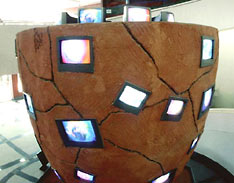 Ceramic installation by Nam June Paik © KOIS |
Business & EconomyThe Bank of Korea The Central Bank of South Korea is based in Seoul, it is the sole issuer of the South Korean Won. Korea Exchange - KSE The Korea Stock Exchange opened its market March 1956 with twelve listed companies, it is the sole securities exchange operator in South Korea. Woori Bank The largest bank in South Korea. Korea Chamber of Commerce and Industry The KCCI is the oldest and largest business organization in Korea. Korea Trade-Investment Promotion Agency (KOTRA) KOTRA is connecting worldwide buyers with Korean suppliers. buyKOREA Korean marketplace online. 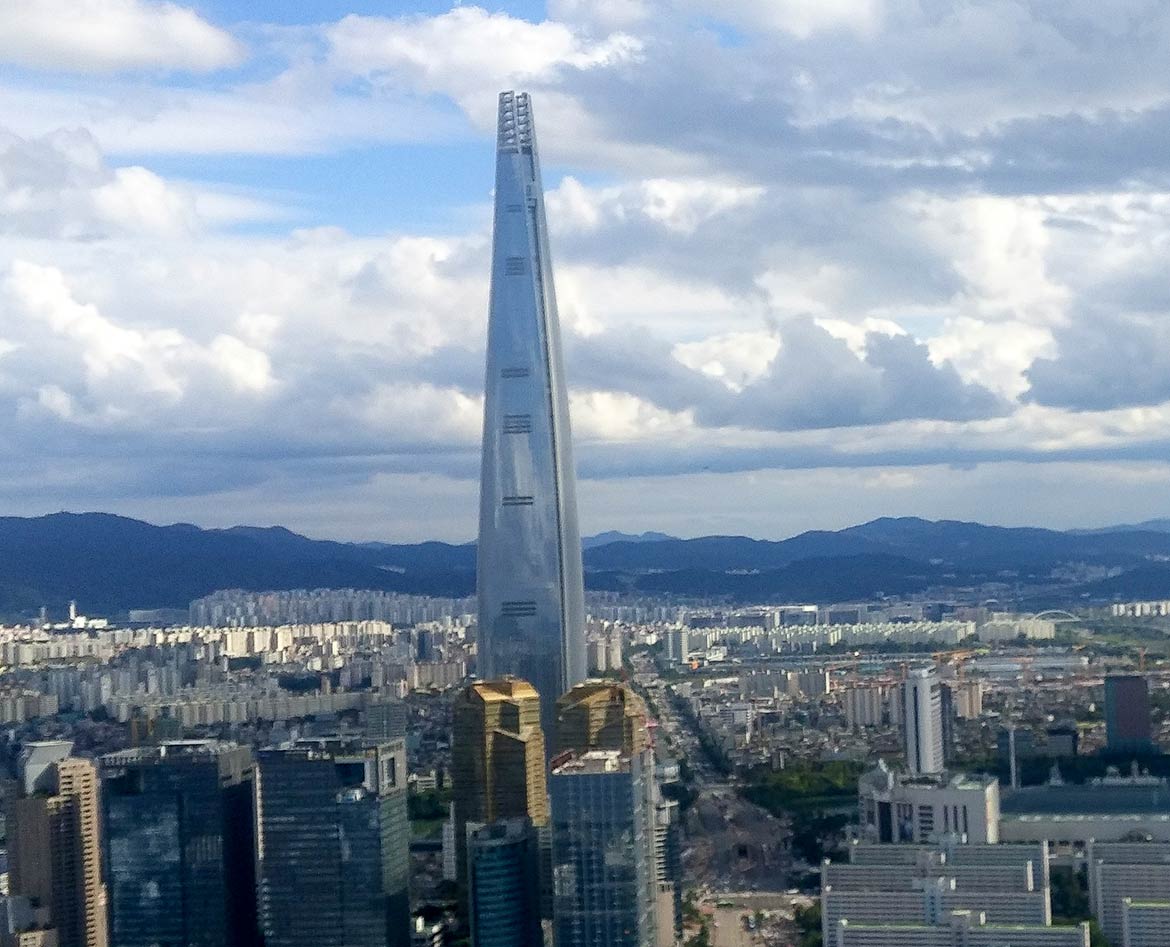 Lotte World Tower, the 123-floor, 554.5-m supertall skyscraper in Seoul is highest building on the Korean Peninsula. It opened to the public on April, 3rd 2017. Some critics say that the skyscraper is towering over the city like Korea's family-owned powerful conglomerates, known as chaebols, which dominate South Korea's economy and politics. Image: Neroson South Korean Brands Hyundai Group The South Korean conglomerate (Chaebol) includes Hyundai Automotive Group, Hyundai Department Store Group, and Hyundai Heavy Industries Group. KIA South Korea's second-largest car manufacturer. LG (short for „Lucky GoldStar“) A Korean Global Business Group. Samsung The multinational company is by far the largest conglomerate (Chaebol) in South Korea, it is headquartered in Seoul. DaeWoo Korean was a manufacturer of cars and electronic, it was dismantled by the Korean government in 1999. Daewoo was the second largest conglomerate in Korea after the Hyundai Group. POSCO A multinational steel-making company headquartered in Pohang, a port city at the Sea of Japan (East Sea) in Gyeongsangbuk-do province.. Hankook Tire South Korean manufacturer of tires for passenger cars and trucks, it is the 7th largest tire company in the world. Retailer e-mart South Korea's largest retailer and first discount store, with 160 stores across the country. Lotte Department Store The Korean retail company is headquartered in Seoul, established in 1979. Holdings Doosan Doosan is a corporate holding company with multiple business areas, from electro-materials to fashion, to information and communication. The company is headquartered in Jung-gu, Seoul. Transportation Airlines Asiana Airlines Korea's second largest carrier, headquartered in Seoul with hubs at Seoul-Incheon and Seoul-Gimpo Airports. Air Busan Air Seoul Korean Air Korea's national airline. Incheon Airport (IATA code: ICN) Seoul-Incheon International Airport is the largest airport in South Korea, located 49 km (30.5 mi) on the island of Yeongjongdo. Gimpo International Airport (IATA code: GMP) Gimpo Airport was formerly South Korea's most important international airport before being replaced by Incheon International Airport in 2001. Railroad Korail Korea Railroad Corporation is the national railroad operator in South Korea headquartered in Daejeon. It operates intercity, freight trains, and Korea's high speed rail lines throughout the country. |
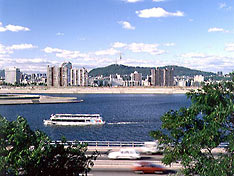 Seoul and Han-gang river © KOIS |
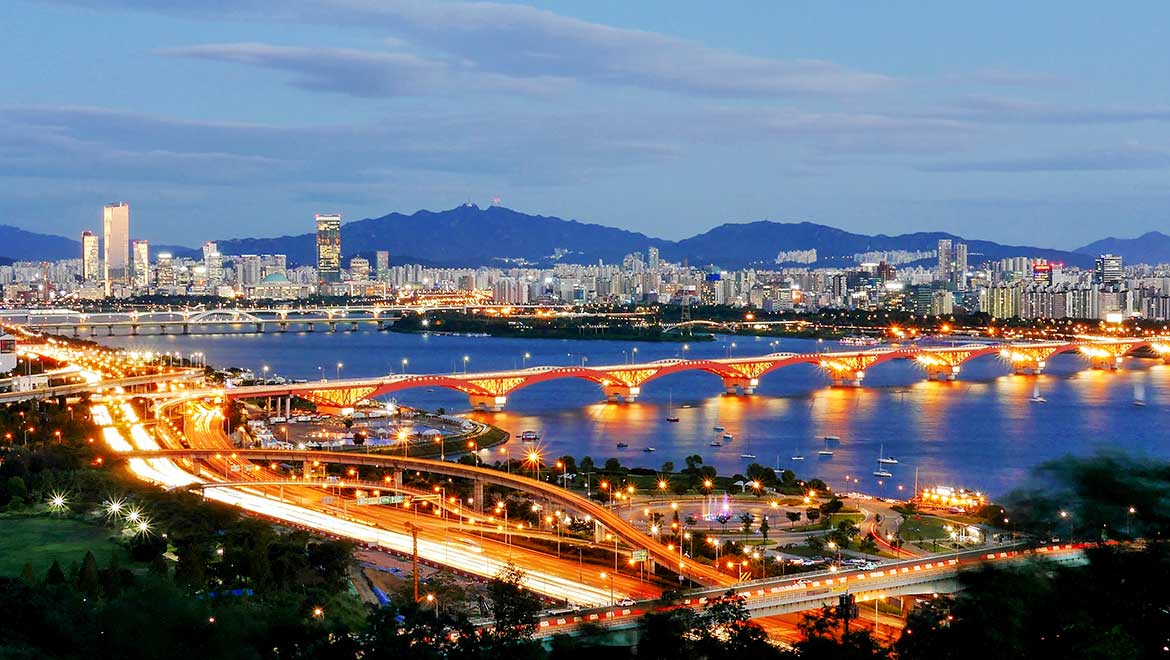 Seoul, South Korea's capital at the Han River, with Seongsan Bridge in center. Image: travel oriented Travel and Tour Consumer Information
Destination South Korea - Travel and Tour GuidesDiscover Korea Regions from north to south: Gangwon-do, Gyeonggi-do Chungcheongnam-do, Chungcheongbuk-do, Gyeongsangbuk-do, Jeollabuk-do, Gyeongsangnam-do, Jeollanam-do, and the island Jeju-do. City destinations: Seoul, Busan, Jeju, Gyeongju, Gangneung, Chuncheon, Jeonju, Suwon, Andong. Official Korea Travel Site by Korea National Tourism Organization. Extensive information on all things Korean. Life in Korea Korean portal with guides to the country's culture. Cities Seoul The Municipality of Seoul, the capital city of South Korea. VisitSeoul.net : Seoul Culture & Tourism The official cityguide by Seoul Metropolitan Government Tourism Division. Busan Busan, the major port is the second largest city in South Korea after the capital Seoul, located at the southeast end of the Korean peninsula on the shores of the Sea of Japan (East Sea). Colorful Daegu Daegu or Taegu, is Korea's fourth largest city, located in Gyeongsangbuk-do province. Daejeon Daejeon or Taejon, South Korea's fifth-largest is located in the center of South Korea in Hoseo region. Gwangju Gwangju or Kwangju, the sixth largest city in South Korea is located in the south west of the Korean peninsula in the center of the agricultural Jeolla region. Incheon Incheon Metropolitan City, located in northwestern South Korea is home to Incheon International Airport (IATA: ICN), the largest airport in South Korea.  Seoraksan is the highest mountain in the Taebaek mountain range in Inje County, Gangwon Province, South Korea. Image: Alexandre Chambon |
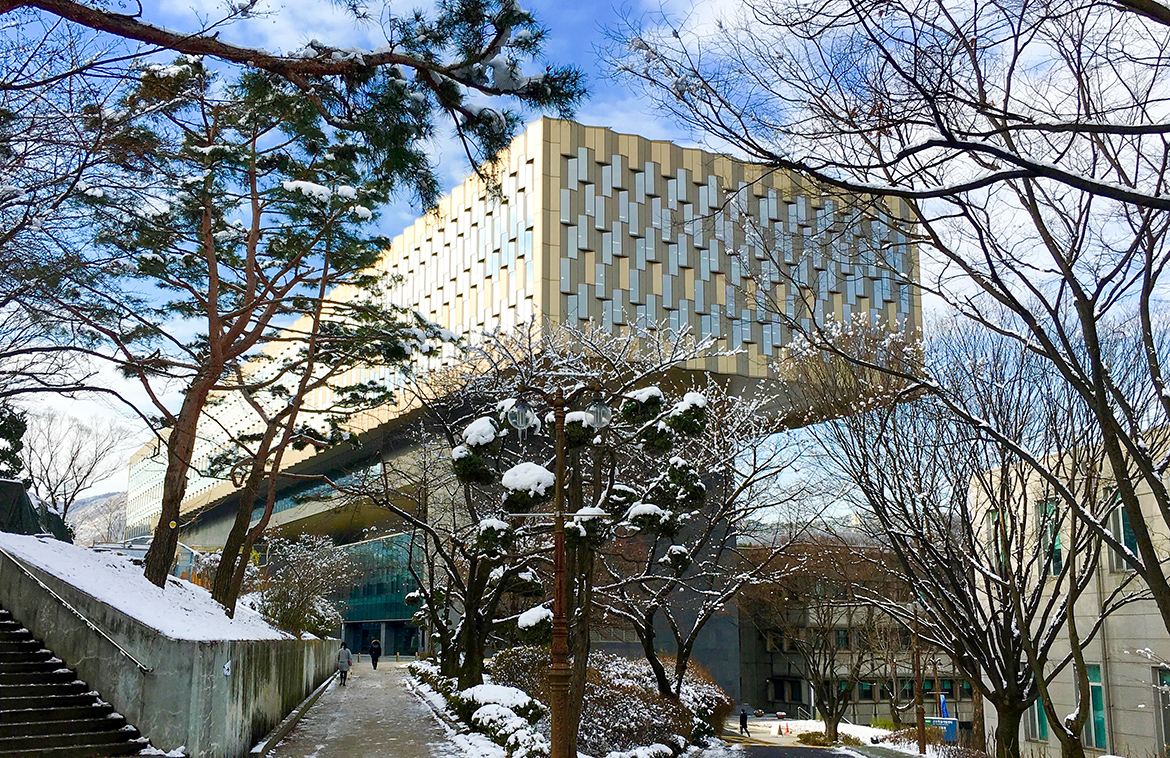 Library building of Seoul National University (SNU). Image: Tchaikovsky3719 EducationKorea University Private university in the South Korean capital Seoul. The institution was founded in 1905, partly by imperial funds, as the first modern college of the country with the name Boseong College. Flagship Korean National Universities The Korean Flagship Universities are designated as the provincial centers of higher learning. The Korean government created flagship National Universities for each province between 1946 and 1968. Seoul National University (SNU) Major teaching and research university, founded in 1946; ... designed to provide students with a sound understanding of humankind and the world... Pusan University (PNU) The university in Korea's second largest city Busan was established in 1946. ...a cradle for the creative technical experts who will lead the advancement of the machinery industry... Jeju National University Jeju University has several professional graduate colleges including a Department of Beauty and Cosmetology, the university is located in Jeju City, Jeju province, it was founded in 1952. Kangwon National University (KNU) Regional flagship educational institution in Chuncheon, Gangwon-do province. Kyungpook National University (KNU) University in Daegu Metropolitan City, it has four campuses in Gyeongbuk province. Chonbuk National University (CBNU) A national research university in Jeonju, Jeollabuk-do province (North Jeolla). Chonnam National University One of the five major national universities of South Korea, located in Gwangju, Jeonnam province. Chungbuk National University (CBNU) A major university in North Chungcheong Province, located in Cheongju, the province capital. Chungnam National University (CNU) A national university for liberal arts, agricultural sciences and engineering sciences in Daejeon in Hoseo region. Gyeongsang National University (GNU) A national university with degree courses in arts, social science, natural science, engineering, agriculture and life science, management, veterinary, education, nursing, and medicine. GNU is located in Jinju, South Gyeongsang Province. The National Library of Korea The Korean National Library is located in Seoul, founded in 1945. The library has over 10 million volumes, including over 1.2 million foreign-language books and some of the national treasures of South Korea. |
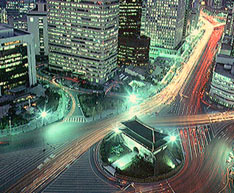 View of Korea's Capital: Seoul © KOIS 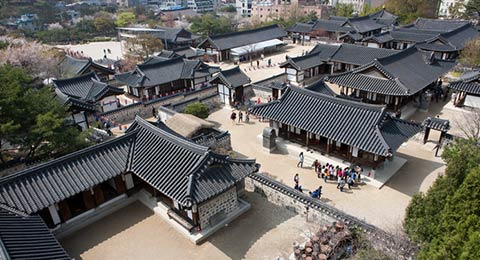 Hanok Village, traditional Korean Houses. © KOIS |
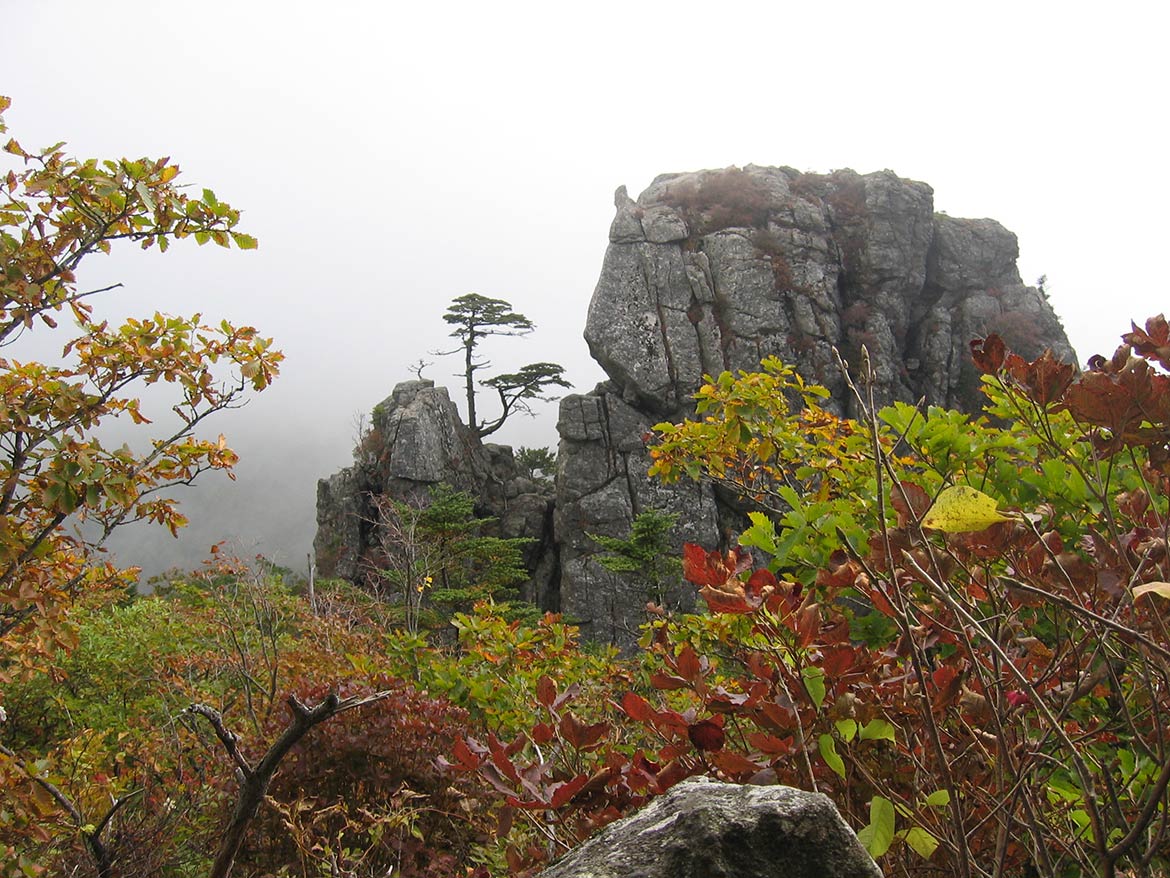 Jirisan mountain in the southern region of the Korean Peninsula is the tallest mountain in mainland South Korea. Image: eimoberg EnvironmentOrganizations EcopeaceAsia Seoul based EcopeaceAsia is specializing in eco-peace making and nature conservation for a sustainable Asia. Global Green Growth Institute The Global Green Growth Institute (GGGI) is an international organization dedicated to supporting and promoting strong, inclusive and sustainable economic growth in developing countries and emerging economies, the organization is headquartered in Seoul. Korea Federation for Environmental Movement/ Friends of the Earth Korea Non-profit organization in South Korea for the conservation of nature and life. National Parks National Parks of Korea Official site of the Korea National Park Service with extensive information on South Korea's National Park System. |
HistoryNational Institute of Korean History NIKH's mission is to governmental the nation's historical heritage, founded in 1946. The T'angun Legend The national foundation myth - The short version. Dangun Dangun Wanggeom or Tangun was the legendary founder of Gojoseon, the first ever Korean kingdom. The long version. History of Korea Wikipedia entry about Korea's History. |
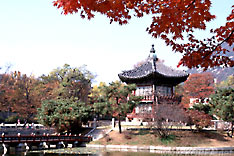 Part of the Gyeongbokgung Palace © KOIS |
Sources and additional Information on South KoreaBBC Country Profile: South Korea GlobalEDGE: South Korea The Heritage Foundation: South Korea Human Rights Watch: South Korea OEC: South Korea Reporters Without Borders: South Korea Wikipedia: South Korea The World Factbook -- Korea |
 |
|
Other Countries in East Asia: China (PRC) | Japan | Mongolia | North Korea | South Korea | Taiwan (ROC) | Vietnam Major Cities in Eastern Asia: Beijing, Busan, Chongqing, Guangzhou, Hanoi, Hong Kong, Kobe, Kyoto, Kunming, Lhasa, Macao, Nagoya, Osaka, Pyongyang, Saigon, Seoul, Shanghai, Shenzhen, Taipei, Tianjin, Tokyo, Ulaanbaatar, Yokohama |
One World - Nations Online .:. let's care for this planet Promote that every nation assumes responsibility for our world. Nations Online Project is made to improve cross-cultural understanding and global awareness. More signal - less NOISE |
| Site Map
| Information Sources | Disclaimer | Copyright © 1998-2023 :: nationsonline.org |